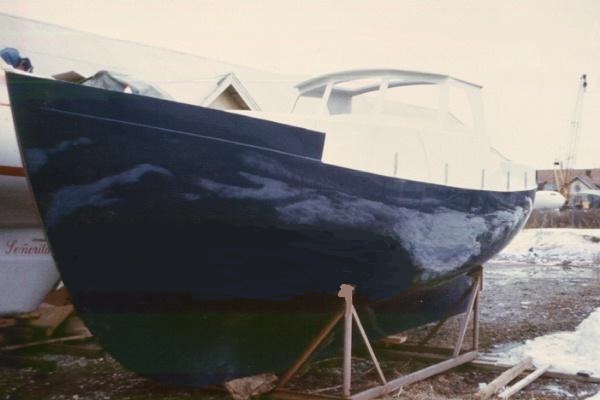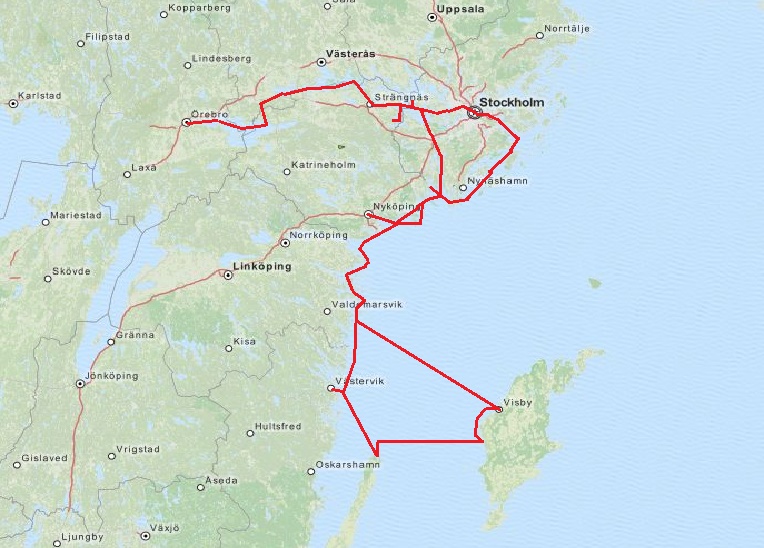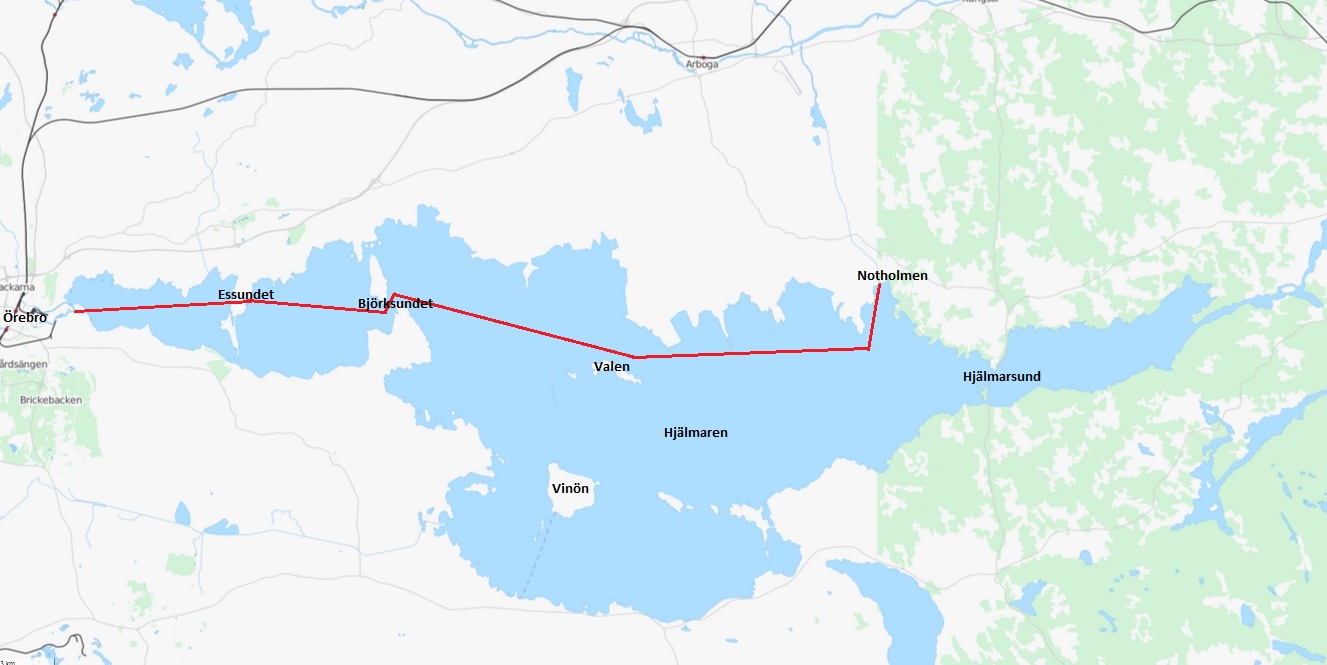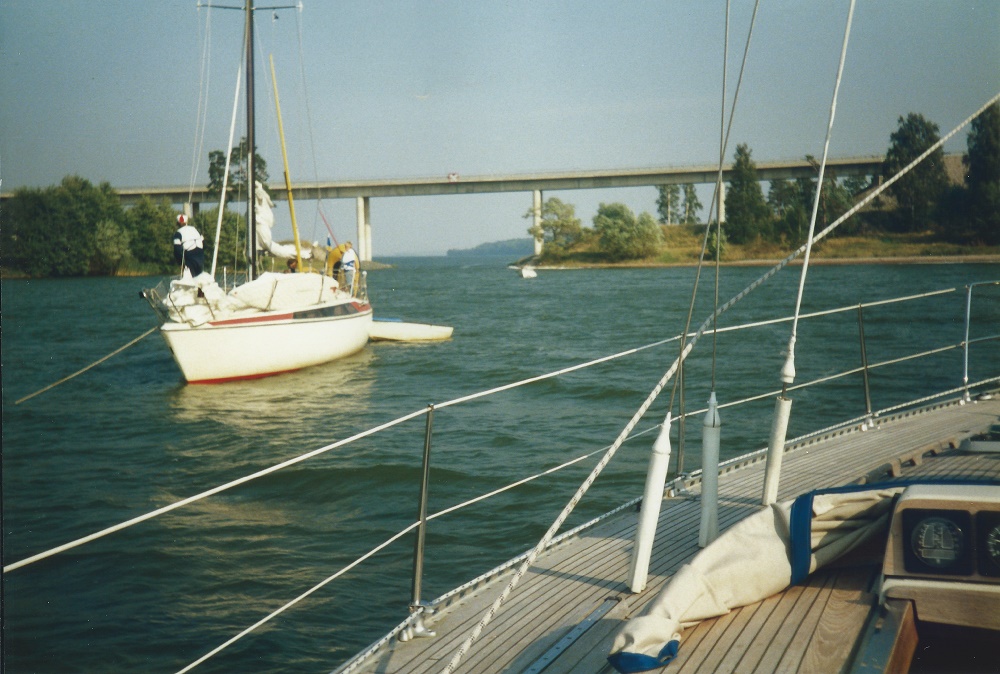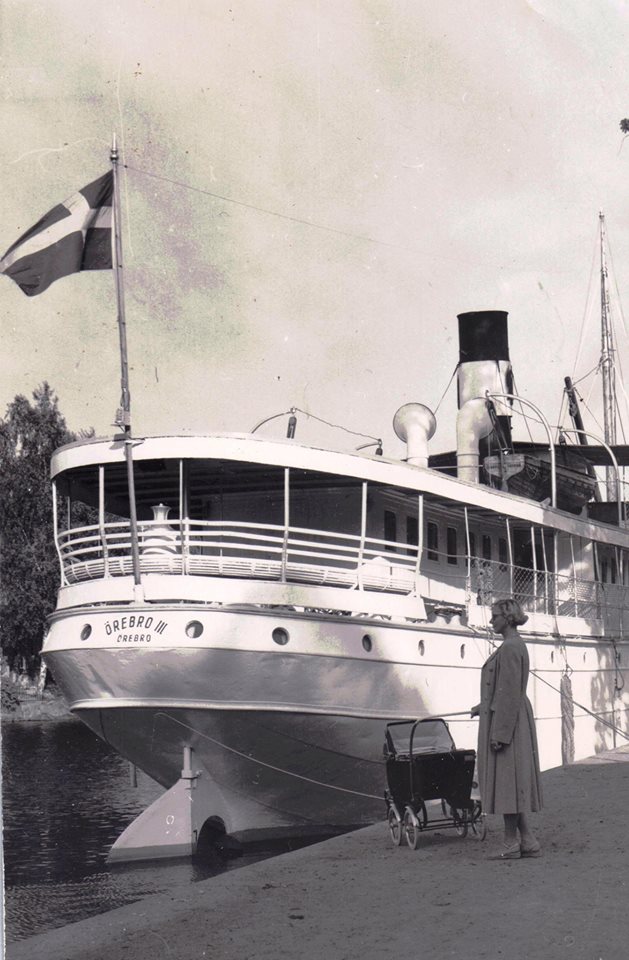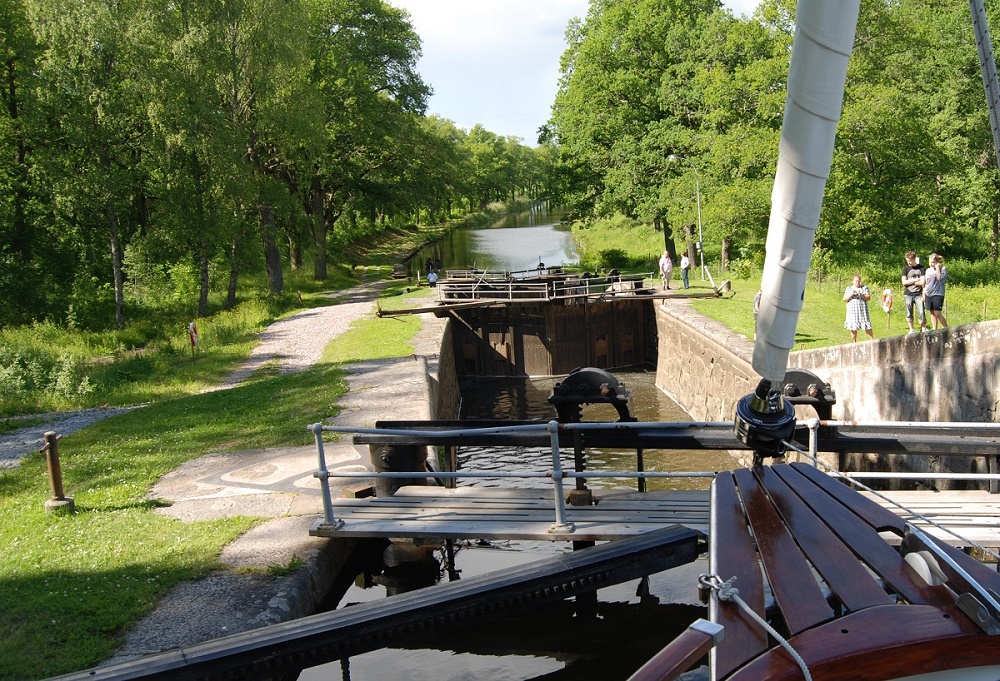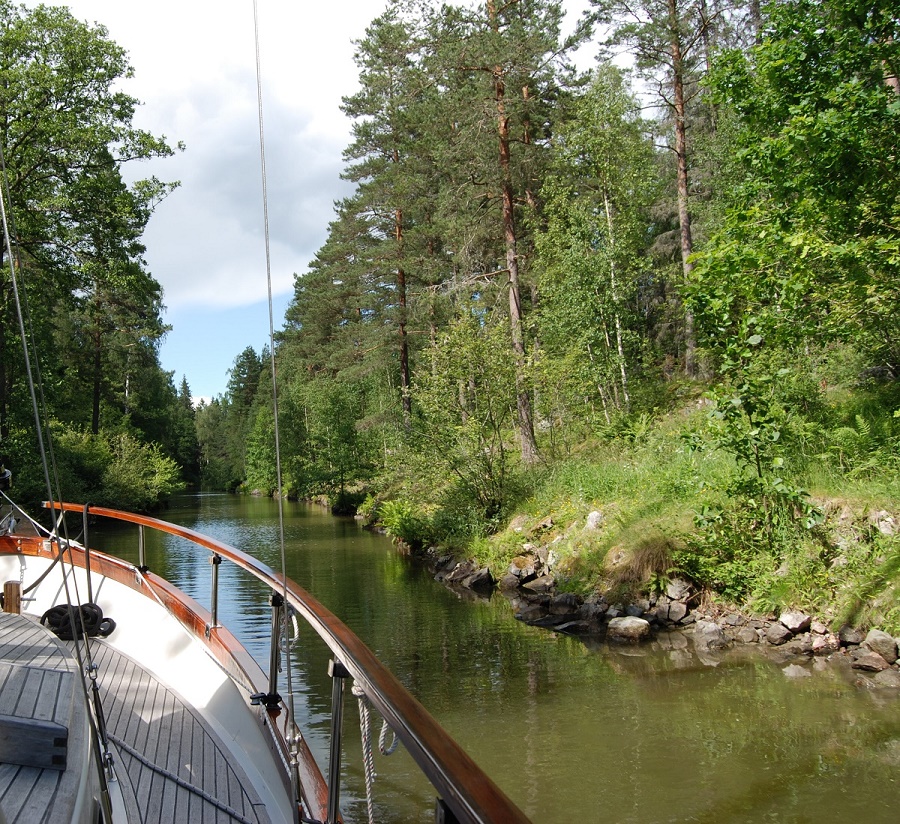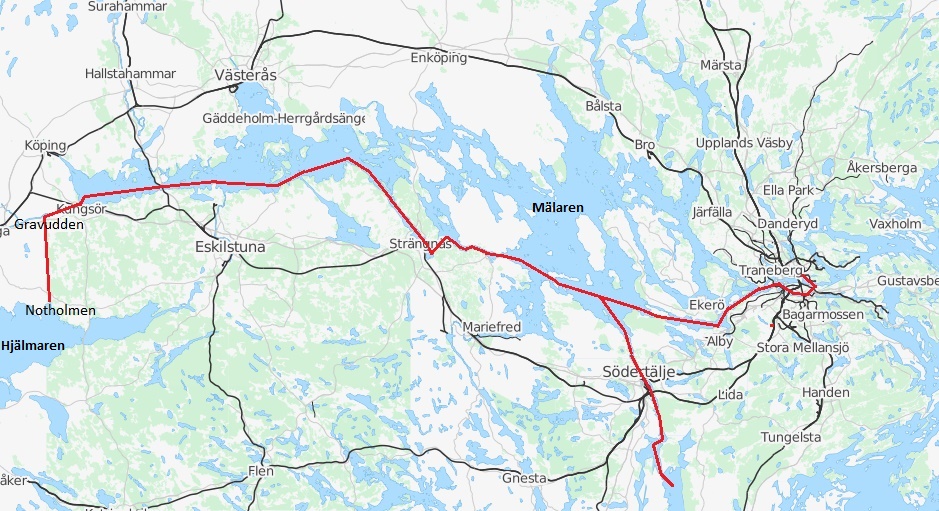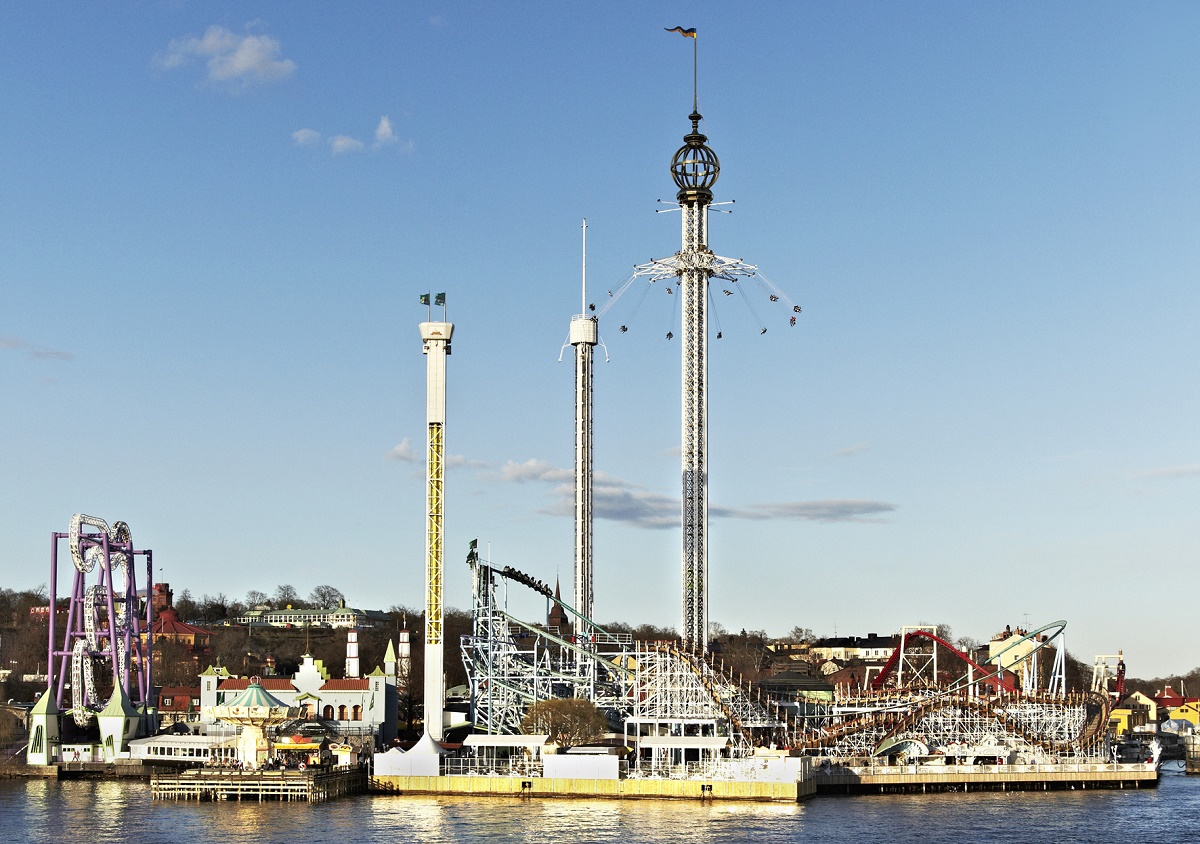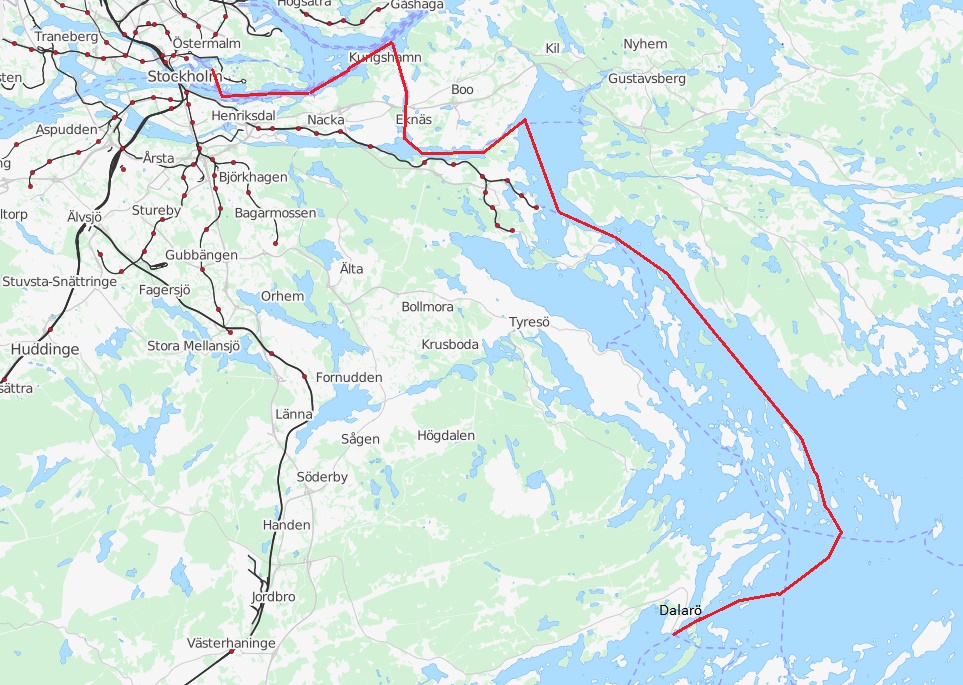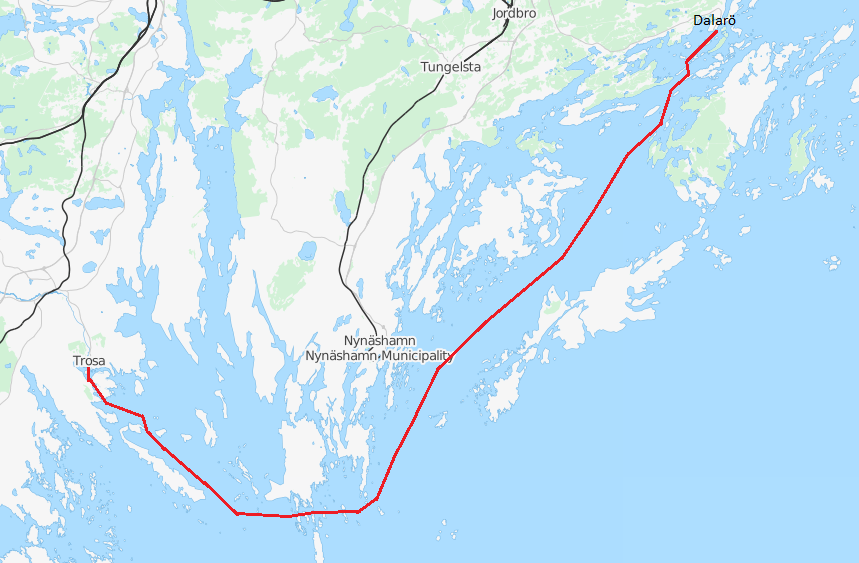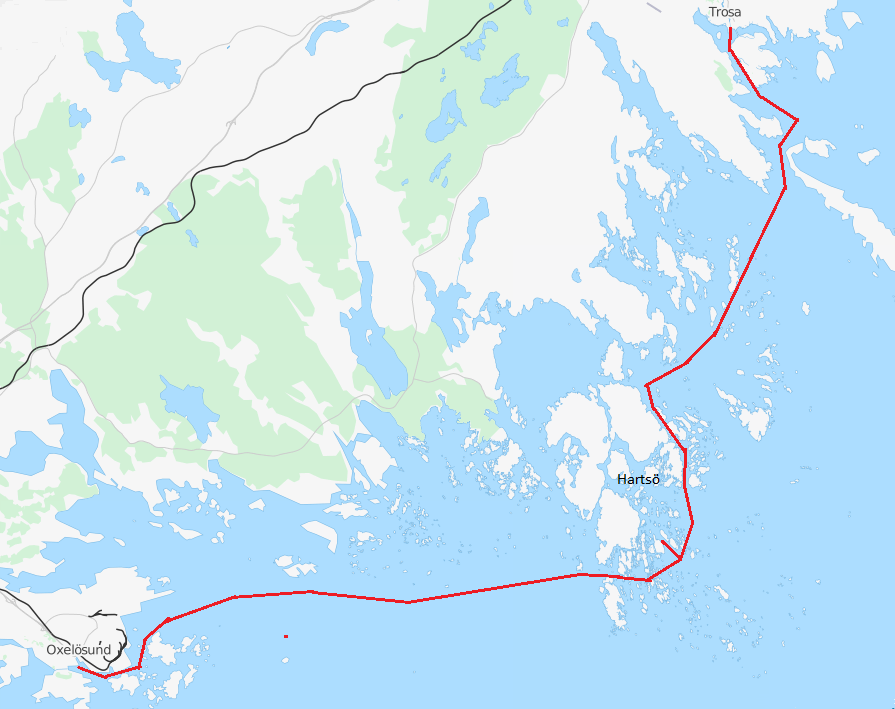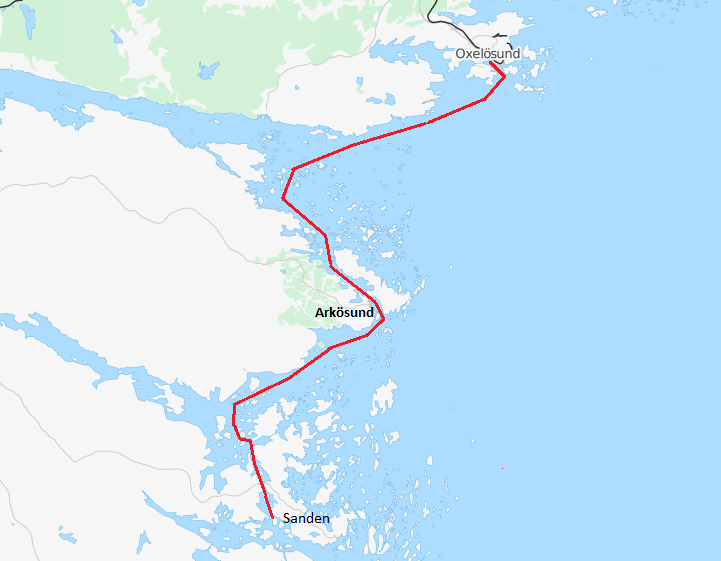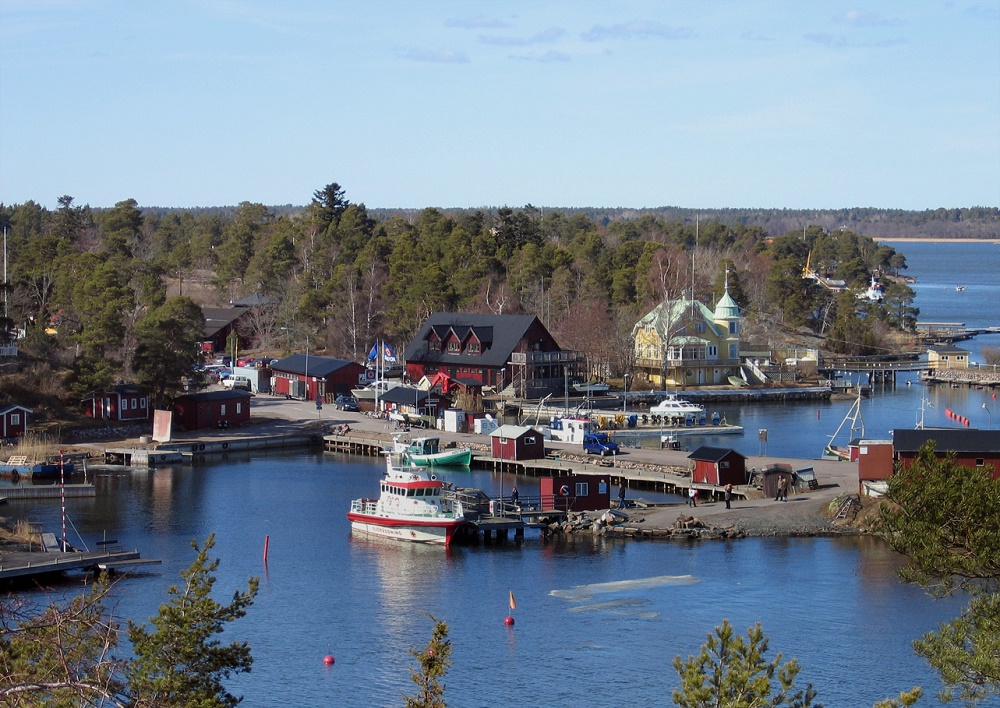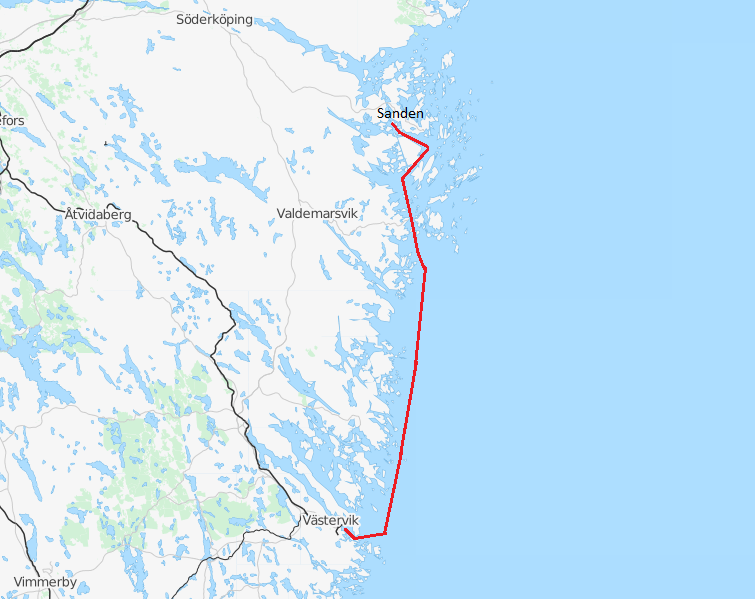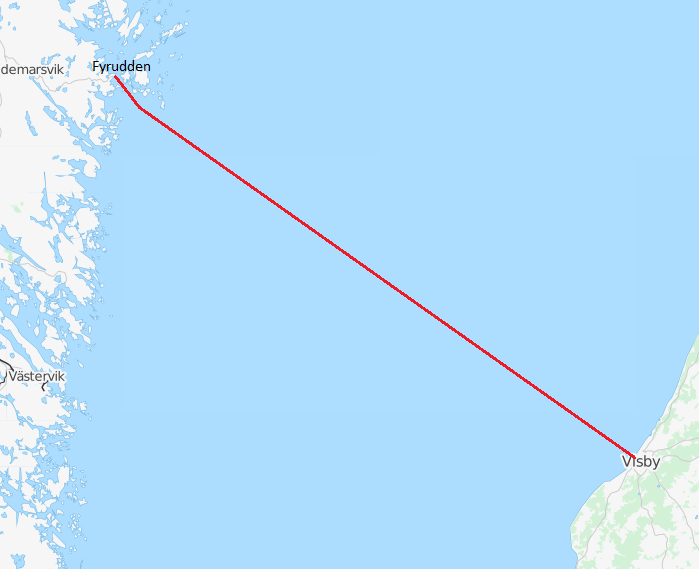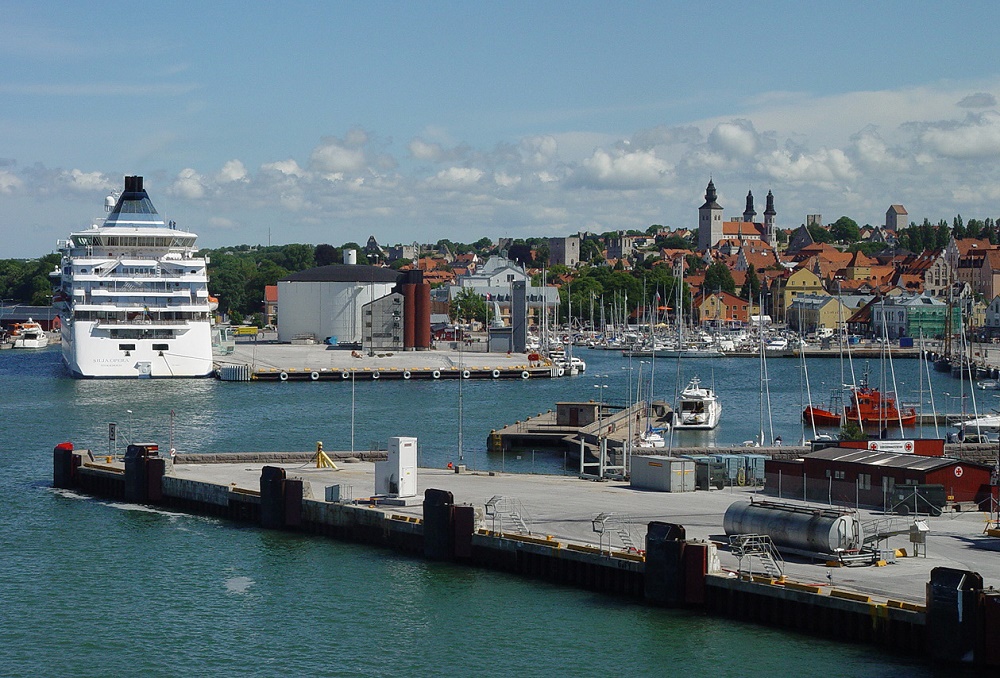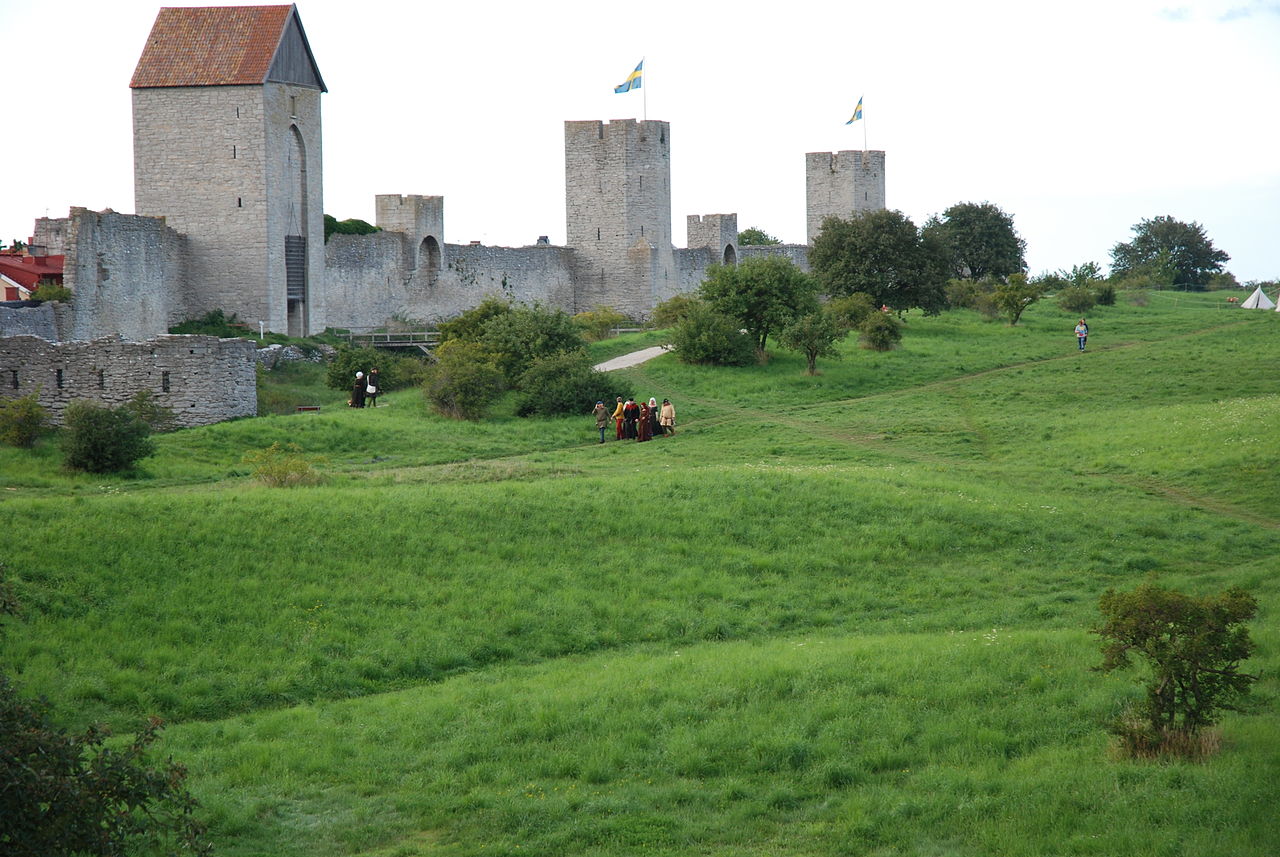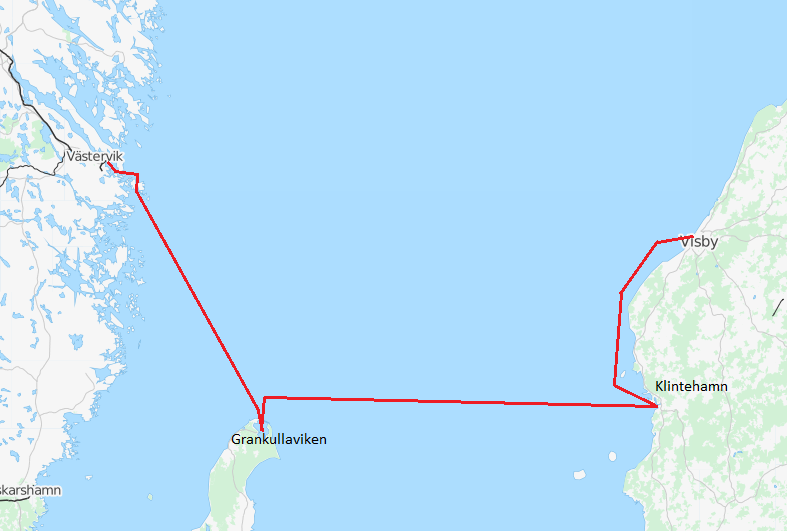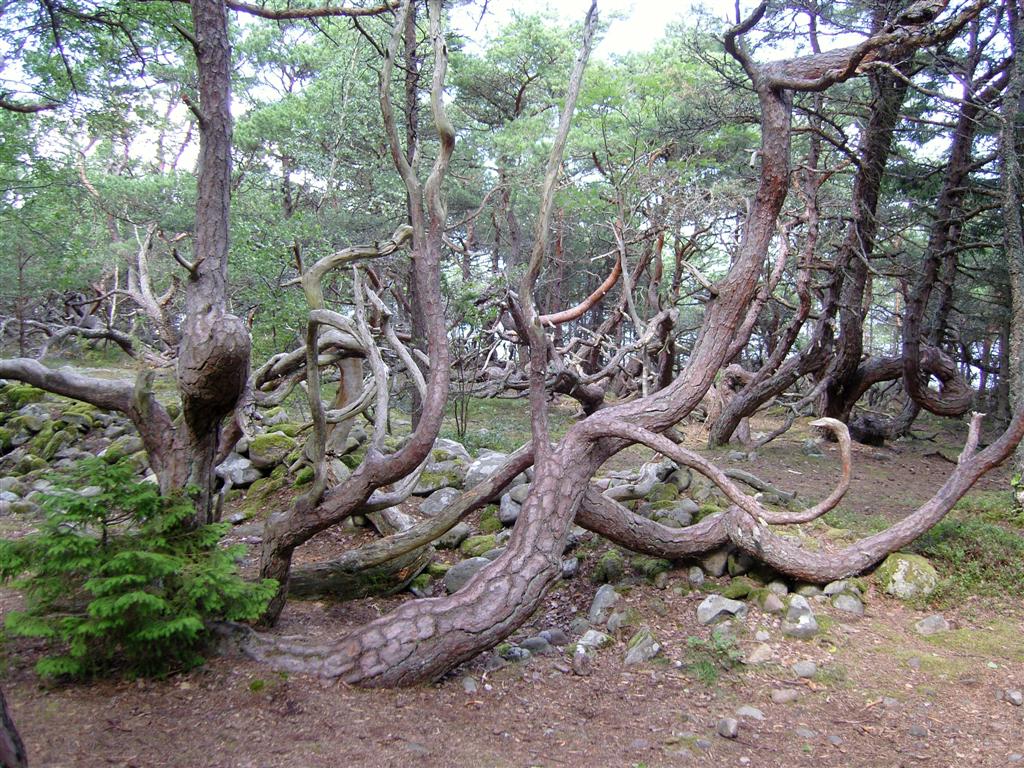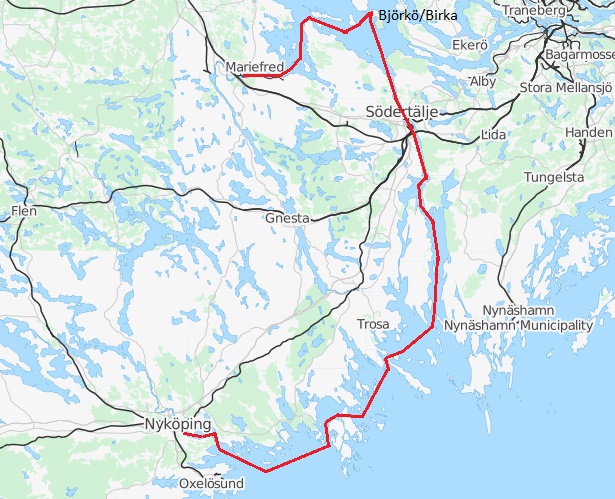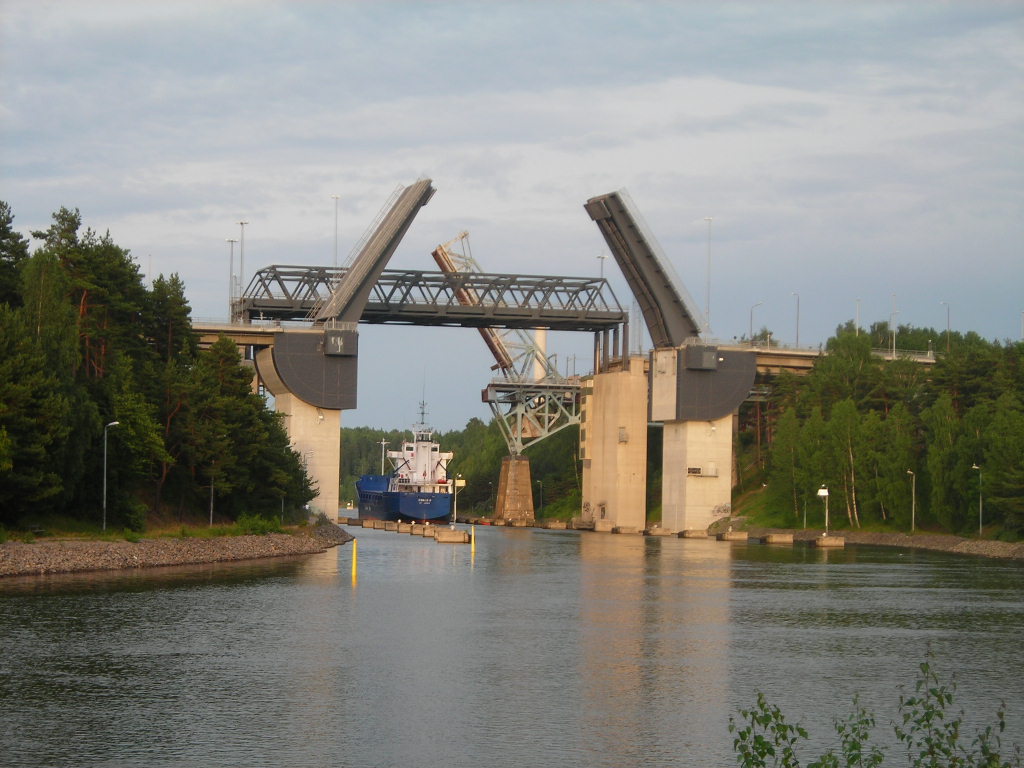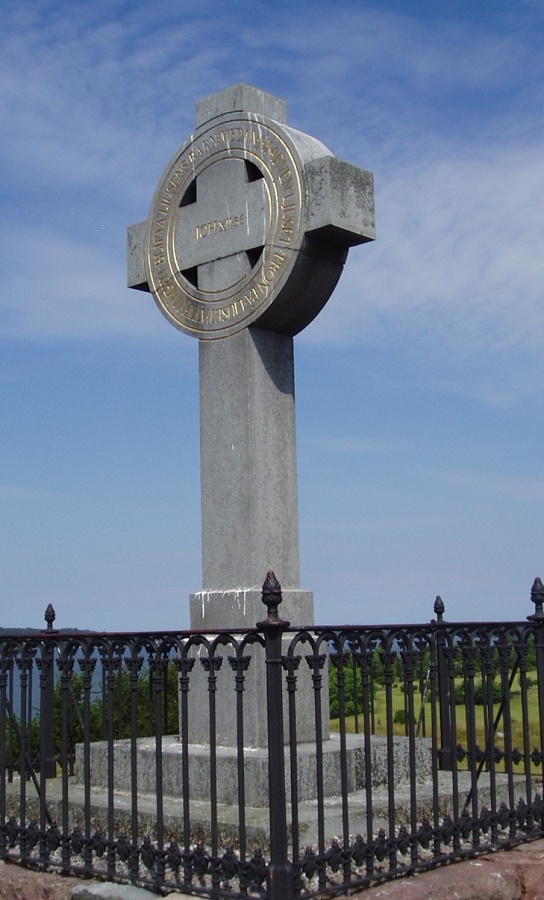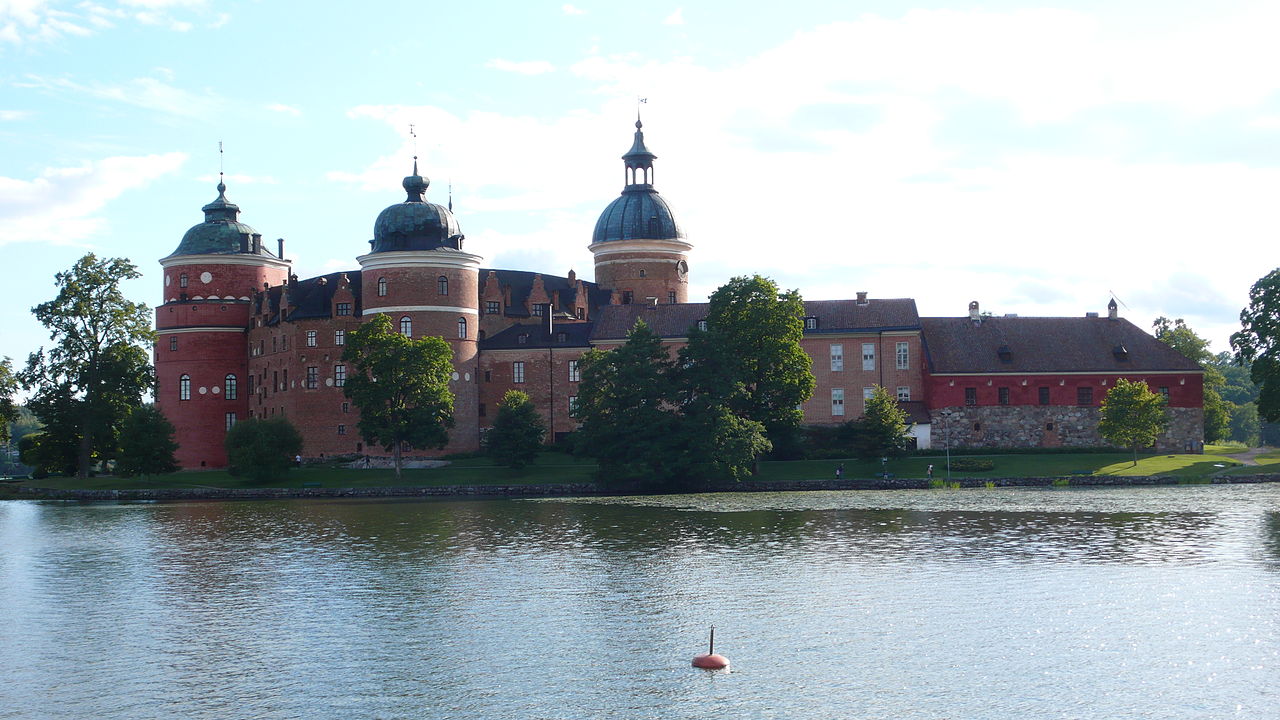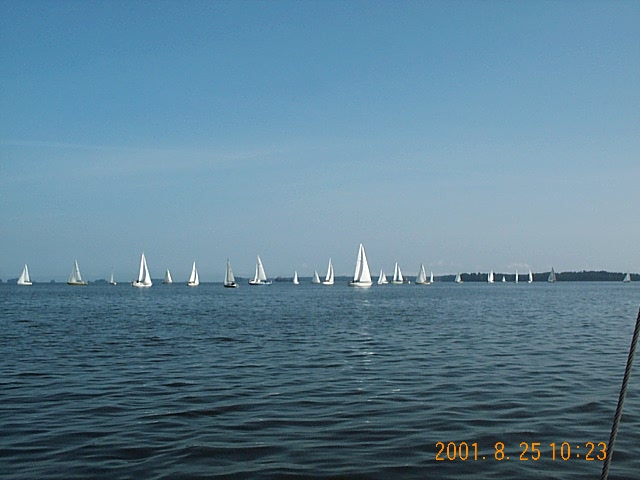
 1980
1980


With S/Y Etoile to Gotland
Örebro, Stockholm Archipelago, Gotland and Öland by Johan Kjellander 2014
I bought the hull to Etoile 1979. It was delivered by the end of March and I worked hard during the spring to get her ready for the water in mid June. I didn't have any rig during 1979 and the interior was more or less empty except for the machinery. I made many tours on lake Hjälmaren that summer, always by motor of course, but I learned a lot about the boat and got the machinery working well.
Work inside the boat continued during the winter and when it was time for launch in June 1980 there was also a rig waiting to be tested. Now it was time to leave lake Hjälmaren and try the waters of the Baltic by sail. The goal was set to Gotland, the biggest island in the Baltic. To do that I first had to sail through lake Hjälmaren and Mälaren and then south along the Swedish coast, see the map above (click to enlarge). Then 60 NM east over open sea to Gotland. A big adventure, I had never crossed open waters like that before. I was really nervous but at the same time it was a great great challenge, and I just had to do it.
From Örebro to Stockholm
This is lake Hjälmaren, fourth biggest lake in Sweden, 483 square kilometers. The red line above starts in our home port Örebro to the west. If you follow the red line to the east you end up in Notholmen where Hjälmare Canal starts, a distance of around 25 NM from Örebro.
Sailing in the east part of Hjälmaren is limited by Hjälmarsund road bridge which is only 12 meters high. On the picture above one of our friends boat Calena, a Maxi-95, is anchored with the bridge in the background.
Hjälmaren is shallow, the waters close to Örebro only have a depth of 1.5 meters. The rest of the lake including the Canal is 2 meters deep or more. Two of the islands are inhabited, the biggest is Vinön with more than 100 people and the other is Valen with around 15 people.
Photo by Gösta Nicander 1954, © Bitten Nicander with permission
To leave Hjälmaren you need to go through Hjälmare Canal into lake Mälaren. This is one of the oldest canals still in use in Europe, opened 1640. It was used for regular passenger traffic between Stockholm and Örebro until 1957 and two oil tankers even continued traffic until 1970. On the picture above you see one of the passenger ships, Örebro 3 moored in the harbour in central Örebro 1954. Örebro 3 returned as a floating restaurant in 1993 but was sold after a few years and now serves as a floating restaurant in Mariehamn on Åland.
Today the canal is used for tourist traffic and private yachts only. According to the lock keeper more than one thousand boats pass each year.
Hjälmare Canal takes you 22 meters down to the level of the Baltic sea through 9 locks. All locks are manually operated so the 7 NM trip usually takes 5-6 hours to complete. Here is a link to information about Hjälmare Canal. Pictures above taken from my friends Tommy and Gunilla's Nauticat.
You leave Hjälmaren at Notholmen, you go through the nine locks and then you reach Gravudden wich is 5 NM from Kungsör upstream in Arboga river. Most boats continue to Kungsör the same day, where there is a small marina with toilets and shower. It is also a good place to do some shopping before you continue through lake Mälaren the next day.
Mälaren is the third largest lake in Sweden, 1140 square kilometers. More than twice as big Hjälmaren. If you take a look at the map images above however, they are very different in character. Lake Mälaren is full of big islands and most of the waters are narrow and close to land. Lake Hjälmaren has its water more concentrated. When you sail these lakes it is easy to get the impression that Hjälmaren is the bigger one.
Photo by Gröna Lund, © CC BY 3.0
There are two routes through lake Mälaren to the Baltic. Many people use the northern route through Stockholm, but if you are south bound and want to save time you can use the bigger route through Södertälje. I had made plans to meet friends in Stockholm so I took the northern route this year. Once in Stockholm the usual place to go is Wasahamnens Marina on Djurgården Island. This is a nice place to be if you want to visit Stockholm, right in the middle of the city with easy access to attractions like the Wasa museum, Skansen Zoo and Gröna Lund amusement park.
The archipelago south of Stockholm
I stayed in Stockholm 3 days, met my brother Anders and finished some rig jobs on the boat. After that, it was time to continue south along the coast to get into a position where it would be suitable to cross the Baltic to Gotland.
The Stockholm archipelago consists of more than 30.000 islands. The area is well suited for sailing during the summer with protected waters and beautiful natural anchorages. There are many many possible routes from Stockholm through the archipelago. As this was the first time for me I chose the main route south wich goes through Baggensfjärden, along Ingarö and down to Dalarö where you can stay for the night.
The plan was now to go south to the Hartsö archipelago to meet friends but my engine wanted differently. The drive belt for the water pump and generator decided to give up, so sailing in the weak wind was the only option. As I was drifting along I suddenly spotted a long mahogany motor cruiser that I recognized. It was my friend Kent with his wife Kerstin, son Joakim and big black dog Zeppo, in their boat Näcken. They were on their way to Trosa so I threw them a line and let them tow me. The next day I fixed the engine and we continued to the Harstö archipelago where we met Affe, Inger, Lasse and Siv in Affe's Albin 25 named Amara on Lundskär. Lots of fun. We stayed there for 3 days, fishing and relaxing. This was the first time I experienced the very special nature of the small untouched islands in the archipelago. Since then I have always loved these islands.
Next stop along the coast on my way south was Oxelösund, with a steel industry and commersial harbour. On our way to Oxelösund we met Sven-Gunnar and Annika in their S30 named Saga. We were now three boats when we arrived to Oxelösund.
Arkösund, Photo by Gustavb, © CC BY-SA 3.0
The next day Kent and his family made me company south with their motor boat Näcken. The goal was set to Sanden on North Finnö in the St. Anna archipelago, where my friend Mats had his summer house. We took the well protected inner route through Arkösund and continued south under the Lagnö bridge and arrived to Sanden where we stopped for the night. I searched for Mats but he was not there so after provisioning we continued south the next day. I wanted to use my sails as much as possible so we agreed to split up here and meet again a few days later.
I set sail and headed south. So far I had mostly sailed in protected waters, with islands everywhere around but as you sail south, the geography changes. The coast becomes less protected and the sea rougher. This was new to me. The wind increased during the day (probably the ordinary sea breeze effect that I did not know about then) and the waves grew higher. I reefed the main and changed the foresail to a small storm jib. 15 NM north of Västervik the sheet to the jib broke and the sail turned into a flag whipping violently in the wind. My first rig failure !
Västervik, Photo by Andreas Nilsson, © CC BY-SA 3.0
I felt like an idiot every time I met another boat with my sail flapping uncontrolled but I couldn't do anything about it, single handed as I was. With only a few miles left to Västervik however, I found shelter and managed to take the jib down. As you see on the images above Västervik has a very well protected harbour.
Västervik was as far south as I would get right now. Next day I repaired the rig and filled my diesel tank. The day after I went back to Fyrudden to meet Kent and his family. Fyrudden is 35 miles north of Västervik and a good starting point for the trip to Gotland. Hopefully the Kent family would join me as crew on my boat over to Gotland and back. I was also hoping to get company with another boat, an Albin Ballad named Slöfock with Kjell as skipper and my brother Anders from Stockholm as one of the crew. Kjell had done this before so I was very glad for his experience.
From the Mainland to Gotland
Crossing an ocean for the first time is a big issue. 60 NM from Fyrudden to Visby, the capitol of Gotland. Nothing in between, only the horizon. I checked the weather forecast early in the morning, I even went up to the Coast Guard office to ask them for advice and to make sure they knew we were going (if anything would go wrong).
The wind was very weak when we started. First motor, then sail, then motor again. Slöfock was a better sailer so she kept on sailing and came behind. I turned my engine off and she came closer. Now she had her motor on. Just as she was going to pass us, something happened with her machinery. Kjell went down to check and came up shouting they were loosing their propeller ! The shaft had lost it's grip with the engine and was sliding backwards, only an inch left inside the boat. Kjell managed to get a screwdriver through the hole in the shaft and the immediate danger was over. With no wind and no propeller there was only one solution, I had to tow them !
Visby harbour, Photo by Jurgen Howaldt, © CC BY-SA 2.0
Being a motor sailer, Etoile had a good engine and a big propeller so towing was no problem. We did 6 knots for 6 hours and then we were in Visby. Not exactly the kind of trip I had expected. In my mind this was going to be scary with hard wind and big waves. Instead I had to play the roll of a rescuer, towing a sailboat over the ocean. Well, anyway, we were there. It was late in the evening and we had lots to talk about. What an adventure !
Visby medieval walls, Photo by Boberger, © CC BY-SA 3.0
Visby is an old city. According to Wikipedia it is "arguably the best-preserved medieval city in Scandinavia". It is also listed by UNESCO as a World Heritage Site. A lot of tourists come to Visby in the summer to see the old houses and narrow roads, the city wall and visit the museums. We spent one day as tourists but then we left Visby and sailed south. In the afternoon we approached Klintehamn and now had to decide whether to stop there or continue to Grankullavik on Öland. We didn't have much time and wanted to get back to the Swedish mainland as soon as possible. We decided to continue, but after an hour or so the wind turned against us and increased so we had to turn back to Klintehamn for the night.
We waited one more day until the wind decreased and then tried again to get back to the mainland. The wind was now better but the swell was still considerable which was a surprise to me. I now know that it usually takes a day or two for the sea to settle. After a bumpy trip we arrived to Grankullaviken on the north end of Swedens second biggest island, Öland. Grankullavik is a fantastic place, beautiful nature, sheltered in all winds and good anchoring in shallow water. I have been there many times later.
Trollskogen, Photo by Dammnap, © CC BY-SA 3.0
Grankullaviken is surrounded by sand with a low pine forest which is very old and grows in strange shapes. It's called Trollskogen in Swedish, Forest of Trolls ! We stayed over night and the next day we continued to Västervik. I had now for the first time in my life sailed my own boat over big waters, all the way to Gotland and back again. No GPS, only paper charts, log and compass. I still remember how proud I was.
Back to Örebro again
Two days later I left Kent and his family in Fyrudden where their boat was waiting for them. I then continued to Nyköping to pick up my brother Anders who was going to make me compnay the rest of the way back home to Örebro.
Road bridge over Södertälje Canal, Photo by BIL, © CC BY-SA 3.0
We now continued north and entered lake Mälaren through Södertälje. This is the route for the commercial traffic into Mälaren. The lock in Södertälje takes ships up to 7000 tons.
Ansgar Monument, Photo by Udo Shröter, © CC BY-SA 3.0
We made a stop on Björkö where the old viking town Birka once flourished. A thousand years ago this was an important trading place, situated where several big waterways crossed. Today it's an archaeological digging site. Ansgar, an early Christian monk was here around 830 AD and is still remembered with a monument. A small marina is located just below the monument.
Gripsholm Castle, Photo by Hofres, © CC BY-SA 3.0
Another interesting place in this part of Mälaren is Mariefred with its conspicuous Gripsholm Castle from 1540. The castle is in good shape with beautiful rooms full of art and open to visitors. We stayed here for the night and the next day we continued west and back to Hjälmaren through the canal, the same way I left, exactly a month earlier. Once in Örebro again, the log showed 800 NM.
Lake Hjälmaren
Spending a few weeks in the Baltic is a pretty normal summer for many boats in Hjälmaren but there is also a lot of sailing done on Hjälmaren itself in May/June and August/September, sometimes even in October before it gets too cold. During the winter all boats are stored on land with rigs removed. There are 10 boat clubs with marinas 2014, the biggest with over 200 boats. There are also a lot of private moorings of course. I guess there are about 1000 boats big enough for longer trips but also many smaller boats that never leave Hjälmaren.
There are many possibilities for competition if you like. One of the bigger races is Vinö Sail Race which is arranged by SHB in the southern part of Hjälmaren each year in the end of August. Above is a picture I took during the 2001 race.
Hjälmaren has a lot of fish and sports fishing is allowed in most places. I have catched pike (gädda), pikeperch (gös), perch (aborre), eel (ål) and crayfish (kräftor). There are lots of natural anchorages and we often meet at popular places during week ends to light a fire and make plans for the summer or tell stories from the summer that just passed. When the season was over in October 1980 my log showed 1250 NM. The trip to Gotland was 800 NM but the rest, 450 NM, is week end sailing on Hjälmaren. When these words are written I am far away from Hjälmaren and might never come back but I will always remember the many years of sailing with good friends on the rocky and shallow waters of this great lake.
